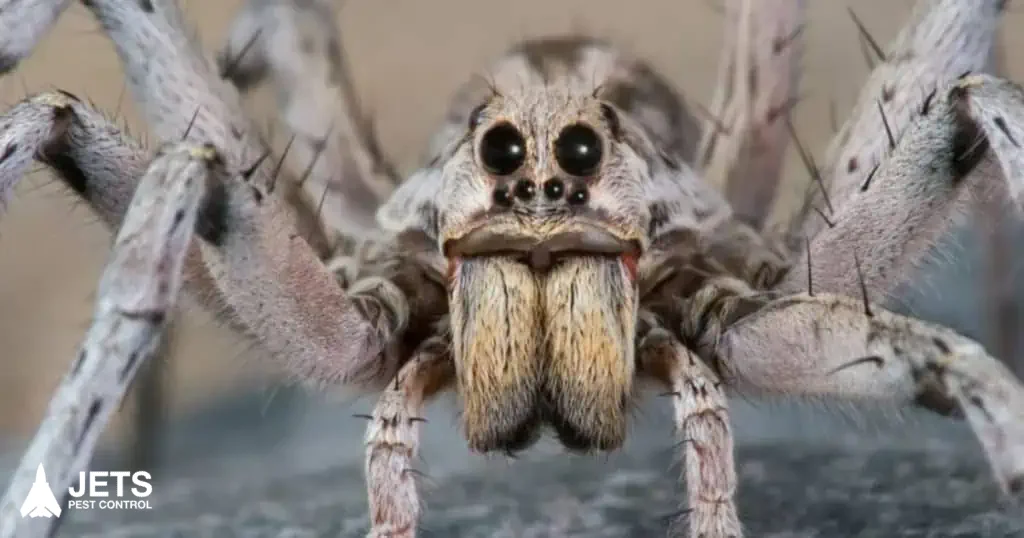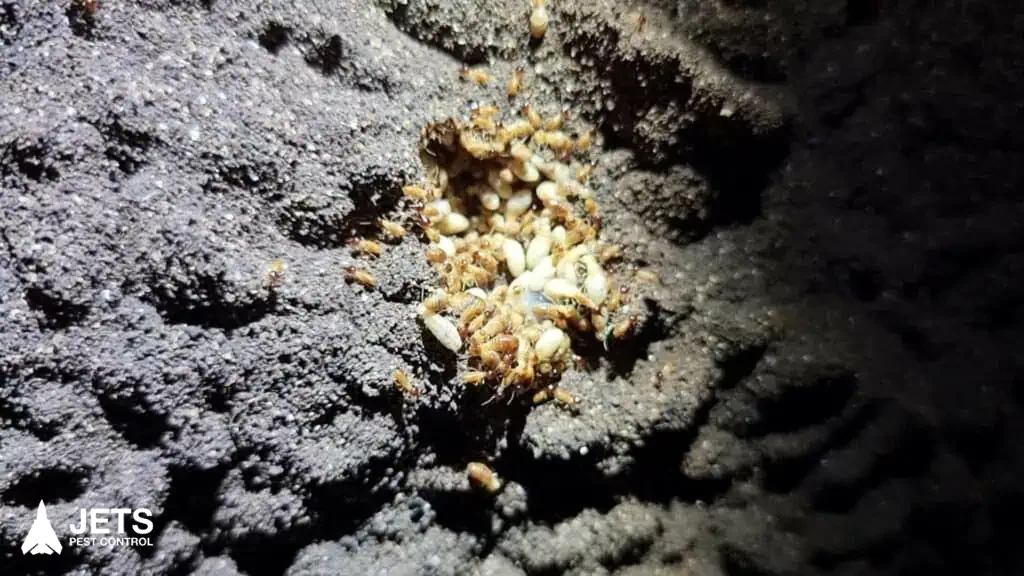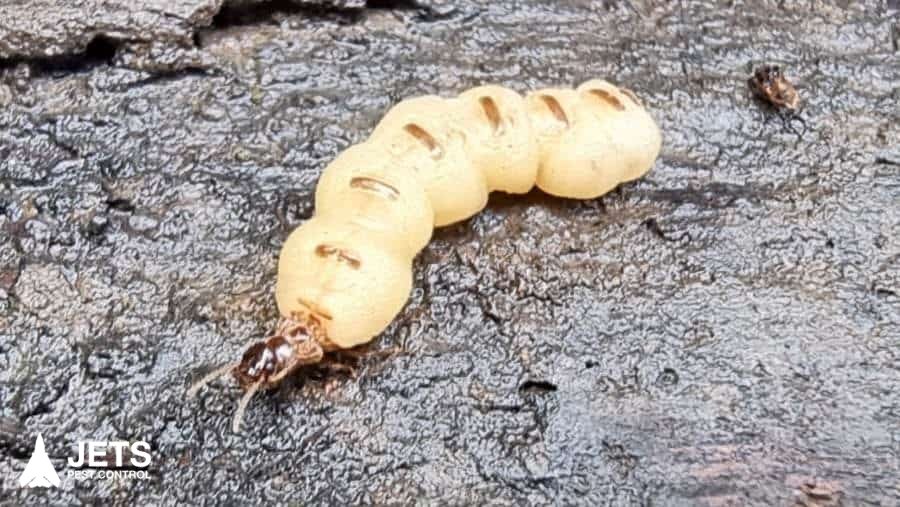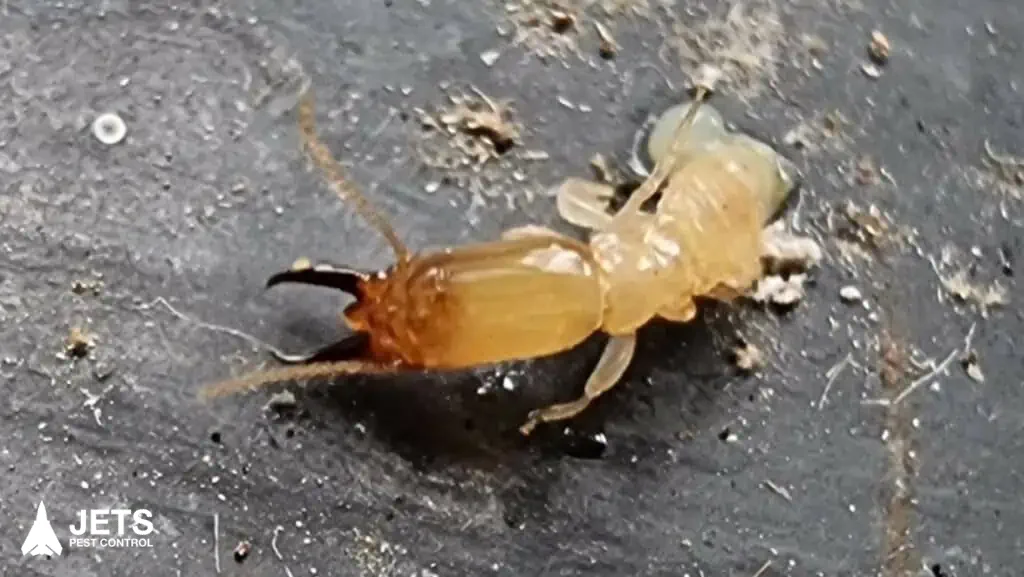Introduction
We find Wolf spiders in Australian homes and backyards. They are strong and agile, and they live on the ground or in burrows. They often live in lawns and gardens, but sometimes they find a home inside your house.
Identification
There are many types of wolf spiders. They range in size and colour. Most have a variegated pattern which is brown, yellow, grey, black and white. The spider’s underside is light grey or cream with black or white markings sometimes have an orange spot or ‘boss’. Wolf spiders have eight eyes. They have four big eyes on top of their head and four smaller ones at the front. Tasmanicosa godeffroyi and Venatrix furcillata are two types that live in Australia. They live in the temperate parts of Australia.
Habitat
Wolf Spiders live in different habitats. Some examples include dry inland shrublands and woodlands, wet coastal forests and alpine meadows. There are some species of wolf spiders which you might find in your backyards, such as Lycosa furcillata and Tasmanicosa godefffroyi.
Distribution
Wolf spiders can have a wide distribution, particularly across inland regions. They can disperse over long distances as spiderlings. They also like to live in microhabitats such as stream-side gravel beds, montane herb fields, and coastal sand-dunes.
Feeding and diet
The Wolf spider mostly eats small insects. It will eat some other things too, like tiny frogs and toads. Two different Wolf spider species are known to eat cane toads. Venatrix lapidosa will take smaller ones, while Allocosa obscuroides will kill a larger one in an hour.
Other behaviours and adaptations
Wolf spiders roam, but some of them make burrows. Some make temporary shelters in plants, and others can plug their holes with pebbles. Some arid zone species build turrets to protect themselves from flooding during heavy rainfall. In woodlands, they use twigs to make a protective barrier around the top of the burrow. The trapdoor of the Grey Wolf Spider ( Dingosa simsoni) is circular and often left open when it goes out hunting. The shape and material used to form these structures may help you tell different types apart that look alike.
Life history cycle
Female spiders build an egg sac of white paper that they carry around. When the spiderlings hatch, the female carries them on her back for a while, or when they are ready to leave, they balloon away. Nursing babies are unusual among spiders because they usually don’t care for their offspring so much.
Wolf spiders can live for up to two years.
Breeding habits
Wolf spiders mate outside of the female’s burrow at night. Some smaller species of adult male Wolf spiders will disperse by air to find mates. The male is attracted to the female spider by the scent markings she leaves on her drag-line silk. The male spider will perform a courtship ritual before mating that involves complex leg and palp signalling to the female spider.
Danger to people and pets
Symptoms of a Wolf spider bite are usually minor. But sometimes, they can be more serious. They can include pain or itchiness in the area you are bitten. Sometimes, people will also experience swelling, prolonged pain, dizziness or rapid pulse and nausea. There is no severe reaction if a Wolf Spider bites someone, but it is dangerous for dogs and cats if this type of spider bites them. If symptoms do not go away quickly after being bitten by one of these spiders, get medical attention right away!
Quick Facts
- Family: Lycosidae
- Infraorder: Araneomorphae
- Order: Araneae
- Class: Arachnida
- Subphylum: Chelicerata
- Phylum: Arthropoda
- Kingdom: Animalia
- Size range: 1 cm to 8 cm
- Habitats: litter
- Life history bode: terrestrial
- Feeding habits: arthropod-feeder, carnivorous, insectivorous, predator
How to Deal with Wolf Spiders
If you’ve been finding wolf spiders in your backyard or garden, then it may be time to contact a professional pest controller. Wolf Spiders are found throughout Australia and can be very robust hunters living in leaf litter or burrows. They are often found in lawns and gardens, so if they have invaded yours, give us a call Jets Pest Control Ipswich on 1300 566 569 for assistance with getting rid of them today!




